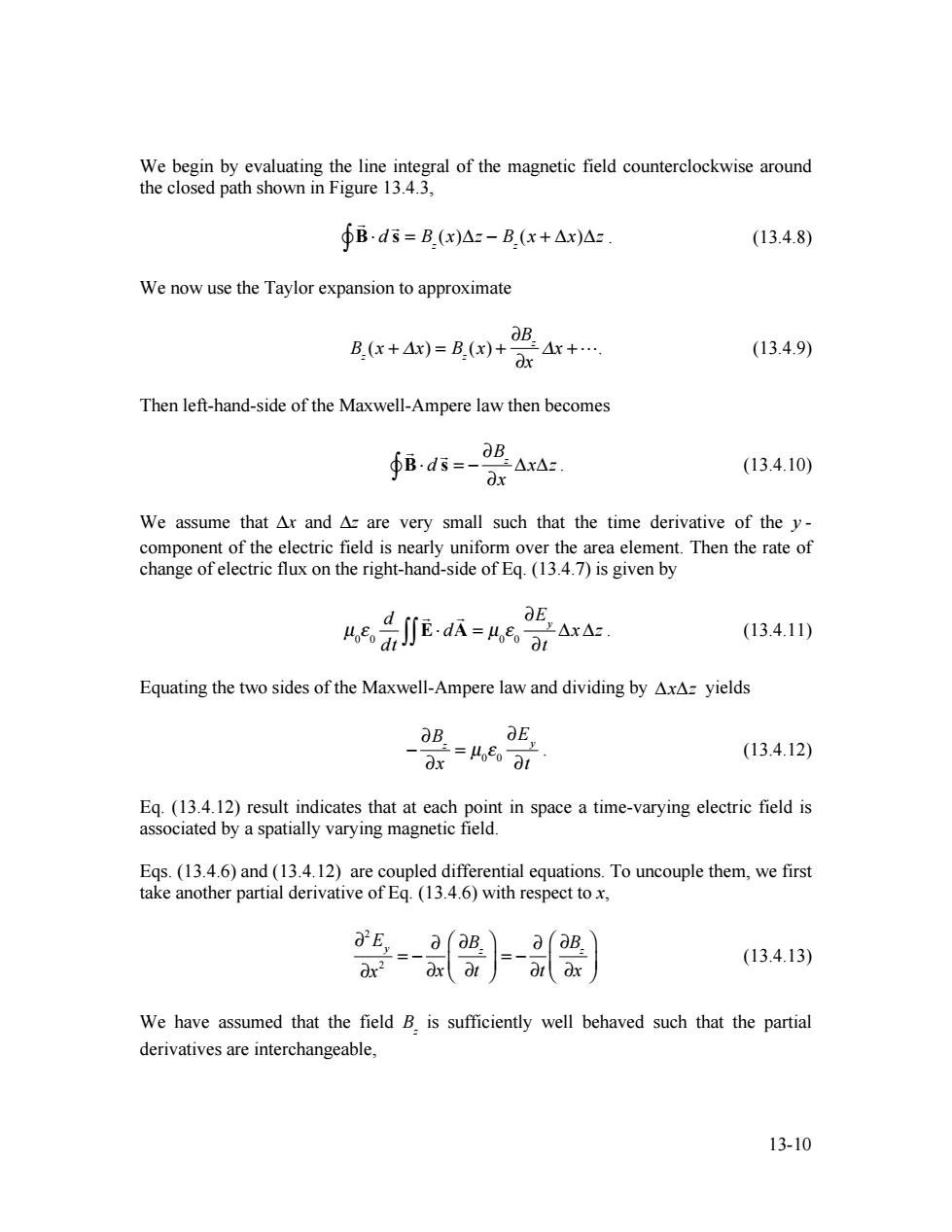正在加载图片...

We begin by evaluating the line integral of the magnetic field counterclockwise around the closed path shown in Figure 13.4.3, ∮B-ds=B.(x)Az-B(+△x)A:. (13.4.8) We now use the Taylor expansion to approximate a B.(x+Ax)=B.(x)+ 三△x+… (13.4.9) O Then left-hand-side of the Maxwell-Ampere law then becomes 6B.d3=-O8 △x△z」 (13.4.10) dx We assume that Ax and Az are very small such that the time derivative of the y- component of the electric field is nearly uniform over the area element.Then the rate of change of electric flux on the right-hand-side of Eq.(13.4.7)is given by .AxAz. A品E-=e (13.4.11) Equating the two sides of the Maxwell-Ampere law and dividing by AxAz yields B.=Ho t E V (13.4.12) Ox Eq.(13.4.12)result indicates that at each point in space a time-varying electric field is associated by a spatially varying magnetic field. Egs.(13.4.6)and(13.4.12)are coupled differential equations.To uncouple them,we first take another partial derivative of Eq.(13.4.6)with respect to x, a=arar arl ax a∂B (13.4.13) We have assumed that the field B is sufficiently well behaved such that the partial derivatives are interchangeable, 13-1013-10 We begin by evaluating the line integral of the magnetic field counterclockwise around the closed path shown in Figure 13.4.3, ! B! d ! s "" = Bz (x)#z $ Bz (x + #x)#z . (13.4.8) We now use the Taylor expansion to approximate Bz (x + !x) = Bz (x) + "Bz "x !x +!. (13.4.9) Then left-hand-side of the Maxwell-Ampere law then becomes ! B! d ! s "" = # $Bz $x %x%z. (13.4.10) We assume that !x and !z are very small such that the time derivative of the y - component of the electric field is nearly uniform over the area element. Then the rate of change of electric flux on the right-hand-side of Eq. (13.4.7) is given by µ0 ! 0 d dt ! E" d ! ## A = µ0 ! 0 $E y $t %x %z . (13.4.11) Equating the two sides of the Maxwell-Ampere law and dividing by !x!z yields ! "Bz "x = µ0 # 0 "E y "t . (13.4.12) Eq. (13.4.12) result indicates that at each point in space a time-varying electric field is associated by a spatially varying magnetic field. Eqs. (13.4.6) and (13.4.12) are coupled differential equations. To uncouple them, we first take another partial derivative of Eq. (13.4.6) with respect to x, !2 E y !x 2 = " ! !x !Bz !t # $ % & ' ( = " ! !t !Bz !x # $ % & ' ( (13.4.13) We have assumed that the field Bz is sufficiently well behaved such that the partial derivatives are interchangeable